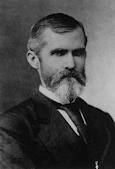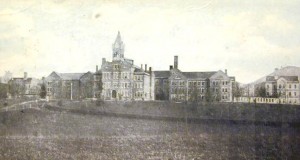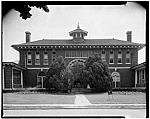The quality of food at asylums ranged from the piece of bread and five prunes Nelly Bly received on Blackwell’s Island to the abundance of milk and eggs sickly patients received at St. Elizabeths. Many institutions made a point of offering enticing food to patients who had problems eating; one woman at Hilltop recounted the generous breakfast of oatmeal, bacon, scrambled eggs, toast, milk and juice, and the evening pot of chocolate brought to her by staff.
Physicians generally considered it positive when patients put on weight. Notes on a woman named Katie at the Southwestern Lunatic Asylum in Virginia said that she had “fattened up some.” Of another woman there, the physician wrote that she had “gained flesh and strength.” Of others, doctors noted that patients had “improved in flesh” or had “grown stout.” There never seemed to be any attempts to help patients lose weight, even if they were described as “quite stout.”
The superintendent at Southwestern Lunatic Asylum, Harvey Black, wrote in his first report that three things were necessary to help patients recover and go home: a sufficient quantity and variety of good food, neat, comfortable clothing, and a sufficient number of efficient ward attendants. He spoke of a planned orchard of 400 apple trees, peach and pear trees, grapes, and berries, and stated that even more than that was needed. If nourishing food did have curative powers, Black seemed to want to provide it.
______________________________________________________________________________________


